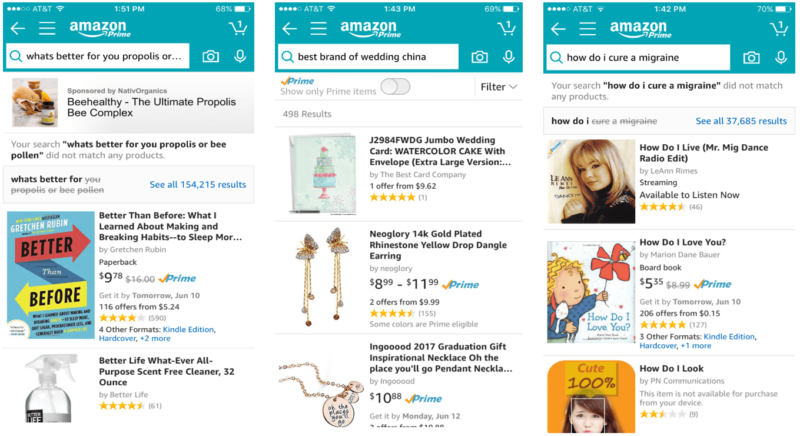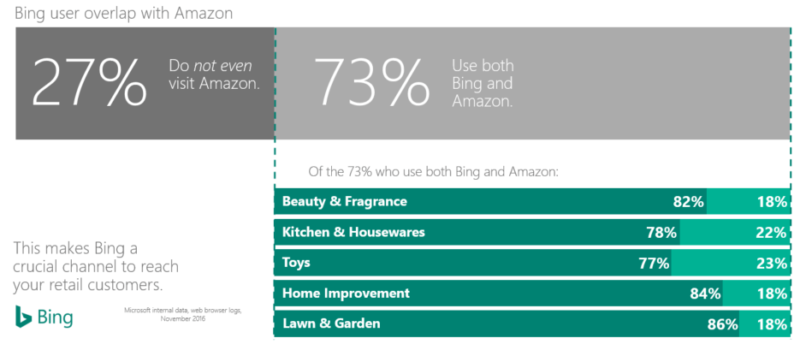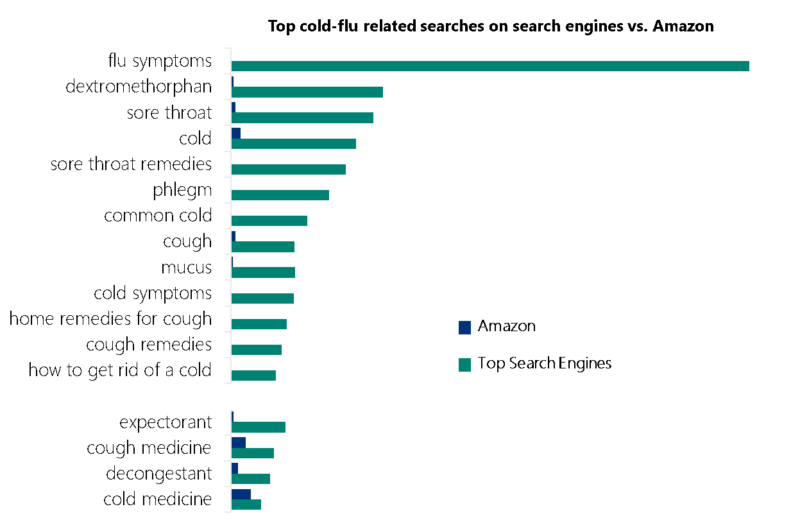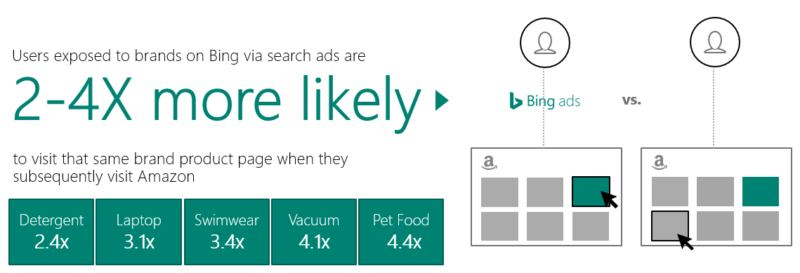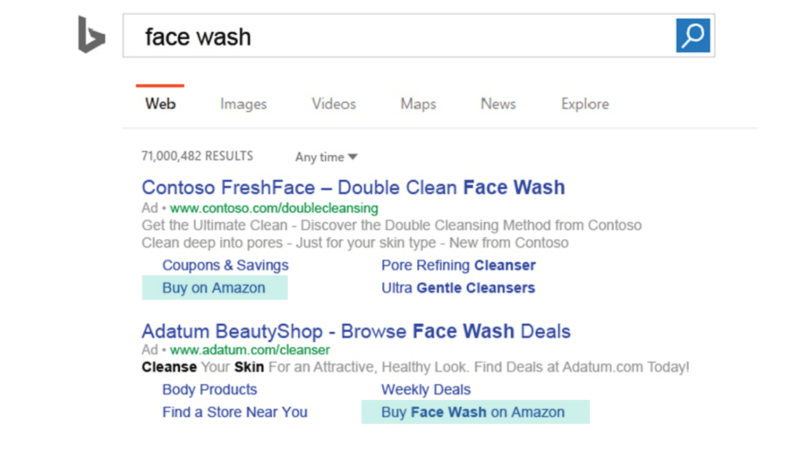Amazon vs. search: Why you shouldn’t put too many eggs in one shopping basket
Where should retail marketers focus most of their time and effort: search or Amazon? Columnist Purna Virji shares data from an analysis of shopper behavior and the findings may surprise you.

No matter where they’re located or what market they serve, retailers around the globe have questions about how consumers use search and Amazon.
At Bing (my employer), we’ve found that retailers — regardless of size — ask us about the same three things:
- Where do consumers look for products online?
- How do users behave differently on search vs. Amazon?
- Can my search and Amazon channels benefit each other?
The answers are likely to surprise you.
The consumer decision journey looks incredibly complicated to us marketers with its interweaving between research, comparison, intent and transaction, but it feels far less complicated from the consumer point of view.
As consumers, we follow certain behavior patterns almost subconsciously:
- If we have questions around what it is we need, or want more information before we make a selection, then it’s natural to turn to search.
- If we know what we’re looking to buy, often we have a predefined preference for which retailer website to begin looking for it.
For many customers, Amazon is a place to start. But is it where customers do most of their shopping-related searches? And is it also the place that they end their journey?
Our company’s search market intelligence team sought to find out.
1. Where do consumers look for products online?
The goal of the test was to study how consumers shopped online, and to learn how search and Amazon fit in within the customer decision journey.
Testing methodology
- We used a sample of 9 million US users who conducted a retail-related search or visited Amazon on a web browser.
- We tracked the user activity on Amazon and Bing and categorized users in different retail categories based on their searches.
- We tracked the user journey, from searching on our site to visiting and searching on Amazon, and vice versa, to understand patterns around user groups that come back to the search engine.
- We scaled the analysis using comScore data to be representative of mobile and app usage.
The myth
“The majority of retail searches now happen on Amazon.”
This myth has been repeated so many times, it’s often taken as fact just from repetition. It is likely derived from studies that report 56 percent of consumers begin their shopping journey on Amazon. The issue lies in the fact that this number is getting misinterpreted as 55 percent of overall retail searches happen on Amazon — which isn’t true.
The thing to remember is that survey data, while extremely valuable, may not always tell you the full story. Often, the decisions we make are formed by unconscious biases or are very generalized, so we can’t speak to our actions with a 100 percent degree of accuracy.
Think about this: If you’ve ever started your product search on Amazon, does that mean that you would always turn to Amazon to start your search for every single product? Or that you don’t conduct any searches after Amazon?
We know conceptually that is not true, so the researchers used behavioral data to answer that question.
The reality
The reality is, we turn to Amazon for only certain types of searches, mainly the lower-funnel ones. But those are only a small fraction of the overall universe of retail searches — nowhere near the 55 percent that is often cited.
For example, think of queries like “best brand of wedding china,” “how do I cure a migraine” or “what’s better for you propolis or bee pollen.” Would your natural instinct for those queries be to turn to a search engine or to Amazon?
More than likely, your answer would be the former, since at the moment, the latter isn’t really built to answer these questions. Case in point:
Search, on the other hand, is used for queries that span the entire range of the funnel, and that’s where logic would dictate the majority of retail searches occur.
The research agrees.
The results
In reviewing millions of users across our data set and comScore’s panel, the team’s research found that most retail searches don’t happen on Amazon; instead, 70 percent of them happen on top search engines.
A study conducted by Rand Fishkin at Moz earlier this year, which analyzed clickstream data via Jumpshot, came to a similar conclusion. Fishkin asked Jumpshot to compare 10 distinct web properties, add together all the searches they receive combined, and share the percent distribution.
The data found that Amazon received only 1.85 percent of searches, whereas Bing, Yahoo and Google combined received 64.02 percent of searches.
What does that mean for marketers?
Amazon is a strong retail channel and continues to grow, though marketers should be careful not to overcorrect. Search not only stands strong as a retail channel, but it can also help complement and strengthen an Amazon strategy as well.
2. How do users behave differently on search vs. Amazon?
In looking to identify how user behavior differed across search and Amazon, we found that 27 percent of users (about 38 million people in the US) did not visit Amazon either before or after searching on Bing.
These are valuable audiences that are looking for your product information online and buying them in physical stores or other online channels.
Even more interestingly, the research found that even the audiences that were common between search and Amazon exhibited different behaviors across each platform.
Testing methodology
Exclusive Audience using our search engine:
- We collected data from Nov 1-7, 2016, using Web Browser Logs (US only).
- We tracked the user activity on Amazon and Bing and categorized users based on queries searched.
- We filtered for users that do retail-related searches on a search engine (combination of various categories such as: Autos; Guns; Sports & Recreation; Office Products; Health & Wellness; Beauty & Fragrance; Clothing & Shoes; Jewelry & Watches; Home Furnishings; Kitchen & Housewares) and computed exclusivity of these search users that don’t visit Amazon.
- We scaled the users to overall population based on comScore’s panel.
- Similar distributions of overall exclusive users were found on larger time periods (~1.5-2 months).
The results
In addition to the discovery that 27 percent of users of our search engine did not visit Amazon at all, the research then drilled down within the 73 percent of users who did use both Amazon and Bing. They unearthed something very interesting.
Approximately 80 percent of users (out of that 73 percent) who do a retail search on Bing and also visit Amazon do not perform the same retail category searches on both sites.
That means that Sally could be looking at buying perfume and, when she seeks information on a search engine, she could be directed to many different sites and eventually buy offline. Sally has also visited Amazon during that time period, but her searches could have been for something different, such as a toy for a child’s birthday.
This behavior was seen across several categories, a few of which are listed in the screen shot below. There are definitely cases where there is a continuation of searches from search to Amazon or vice versa, but that represents the minority, or only about 20-25 percent of the users.
The graph below represents the percentage of shopping-oriented users that visit Amazon but do not search within same category on Amazon:
We can see that for categories like Beauty & Fragrance or Toys, the percent of searchers who do not search within the same category are 82 percent and 77 percent, respectively.
And what of those 20-25 percent of searchers who did related subsequent searches between the two sites?
Shoppers use search for top- through bottom-of-funnel activities. For example, let’s look at data from a client who sells cold and flu medicine, whose pattern holds true across multiple categories.
The teal green bars represent the number of searches conducted on search engines. The dark blue bars were the searches conducted on Amazon.
You can see that search spans the spectrum of upper funnel queries, like “flu symptoms,” down to lower funnel queries, like “cold medicine.” Aside from the typing-averse consumers typing in “cold,” most of their searches are for “cold or cough medicine.”
When was the last time you asked Amazon for flu symptoms or sore throat remedies?
Higher funnel searches (queries like “flu symptoms,” “sore throat remedies,” “cold symptoms,” “how to get rid of cold” in the Health & Wellness category) are not searched at all on Amazon.
Search is also relevant in cases when users are researching what to buy or where to buy it. Very often, search engines are used as a trusted utility to help people make informed decisions, such as determining the best product or finding the best deal.
You can see the stark popularity of users relying on search engines for this information relative to Amazon in the chart below.
What can marketers do?
The upper-funnel queries serve as a great opportunity to market your brand via search to shoppers who are showing clear and strong intent for product categories or are in situations where your product can help meet their needs.
Search continues to be the most relevant channel for the research phase of most consumer journeys because this is the stage at which users are seeking the background information they need to become more informed on what they are seeking to buy.
As a result, advertisers lacking a presence on the major search engines can lose out on critical stages of the consumer decision journey.
3. How can search complement your Amazon strategy?
Finally, our search market intelligence team wanted to understand the impact of search ads on subsequent shopper behavior on Amazon. After all, why would you invest in upper- and lower-funnel terms if they didn’t result in higher consumer engagement?
The team looked at users over a period of seven months, with the criteria being that these users searched for a non-brand/category term. They then segmented them into two cohorts. One was exposed to an ad for that product brand, and the other group was not. Both groups visited Amazon subsequently.
Testing methodology
Case study on brand exposure and behavior on Amazon:
- We collected data over seven nonconsecutive months (June-Aug. 2016; Nov. 2016-Feb. 2017) using Web Browser Logs (US only).
- We tracked the user activity on Amazon and Bing.
- We filtered for users that do searches related to a particular product on Bing (some product examples include diapers, laptops and detergent); we categorized users based on whether or not they were exposed to a particular brand ad for those terms.
- We tracked the activity of the two groups on Amazon and identified the proportion of users that visited that particular brand’s product page on Amazon.
- We expanded the terms to then include other top online retailers.
The results
Users exposed to product brands via search ads are two to four times more likely to visit the same brand product page when they subsequently visit Amazon. You can see a few of the categories measured in the screen shot below.
This test was also run on other major online retailers, such as Walmart and Target, and lift was an average 20 percent higher than that observed on Amazon.
What can marketers do?
Search enables the user to discover brands, thus creating brand awareness, which leads to better conversions on multiple channels.
In addition to product listing ads via shopping campaigns, be sure to run text ads for direct and indirect brand terms, as well as top products, across both Bing and Google. Take advantage of new ad product releases to make the text ads even more compelling.
For example, Bing has recently updated its Sitelink Extensions policy to allow advertisers who don’t have their own retail capability to link directly to their Amazon product page:
This can even be combined with the Price Extension available on Google AdWords, and currently in pilot on Bing Ads, to include the price in the ad copy, sending valuable users to the retail channels of your choice.
On Google AdWords, an interesting new ad extension to try out would be their Promotion Extension.
In summary
Amazon is incredibly important — and so is search. Don’t overcorrect, in either direction, the spend and efforts between the two channels.
The bulk of retail searches still happen on search engines, and behavior is different across search and Amazon. The kinds of searches consumers do on search span upper funnel and lower funnel, while Amazon is mainly for very low-funnel queries.
Advertisers would benefit from using both platforms together to expand customer reach and create additional synergies and enjoy an overall lift in conversions and profit.
The research has proven just how effective that can be.
Contributing authors are invited to create content for Search Engine Land and are chosen for their expertise and contribution to the search community. Our contributors work under the oversight of the editorial staff and contributions are checked for quality and relevance to our readers. The opinions they express are their own.
Related stories
New on Search Engine Land
